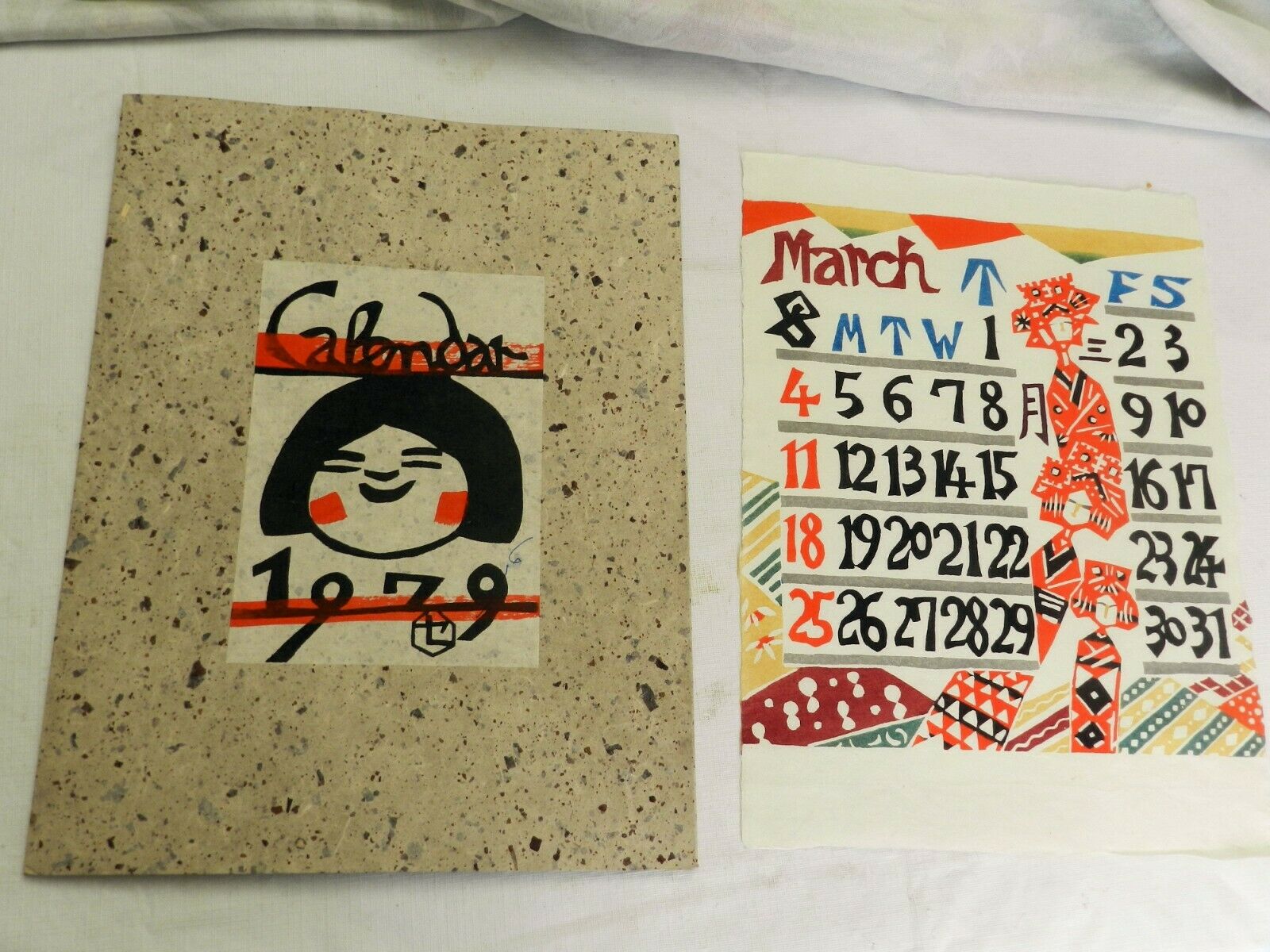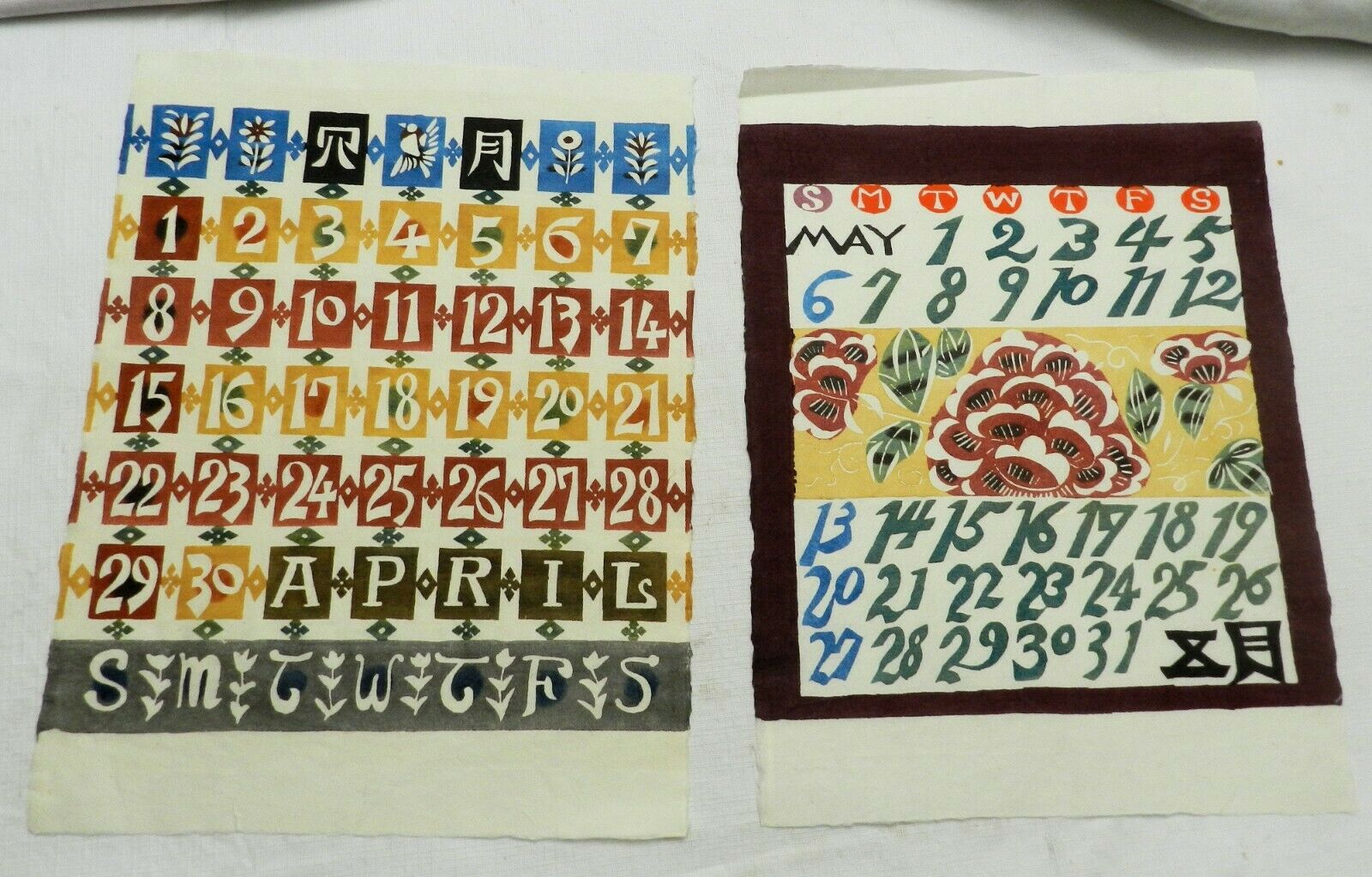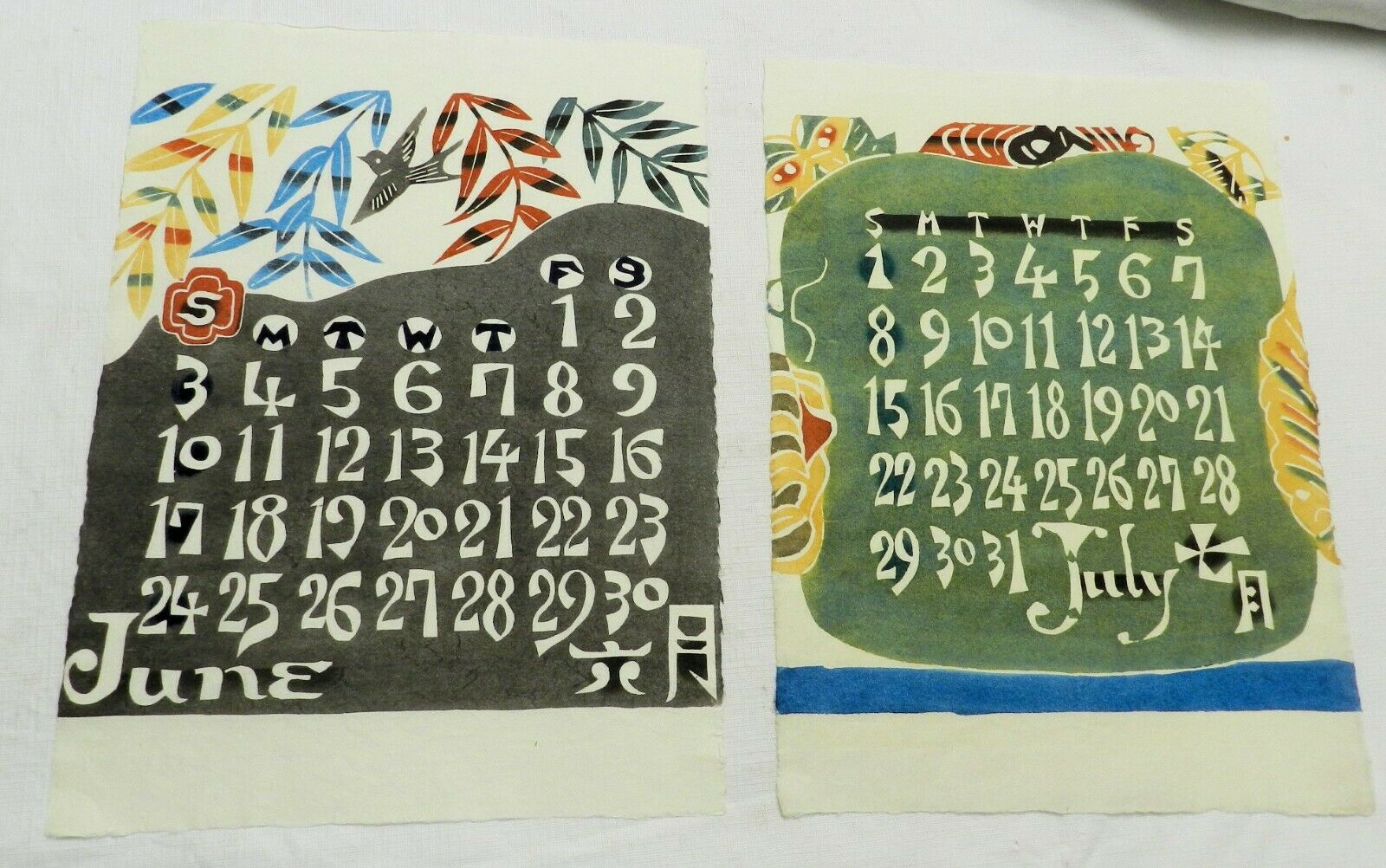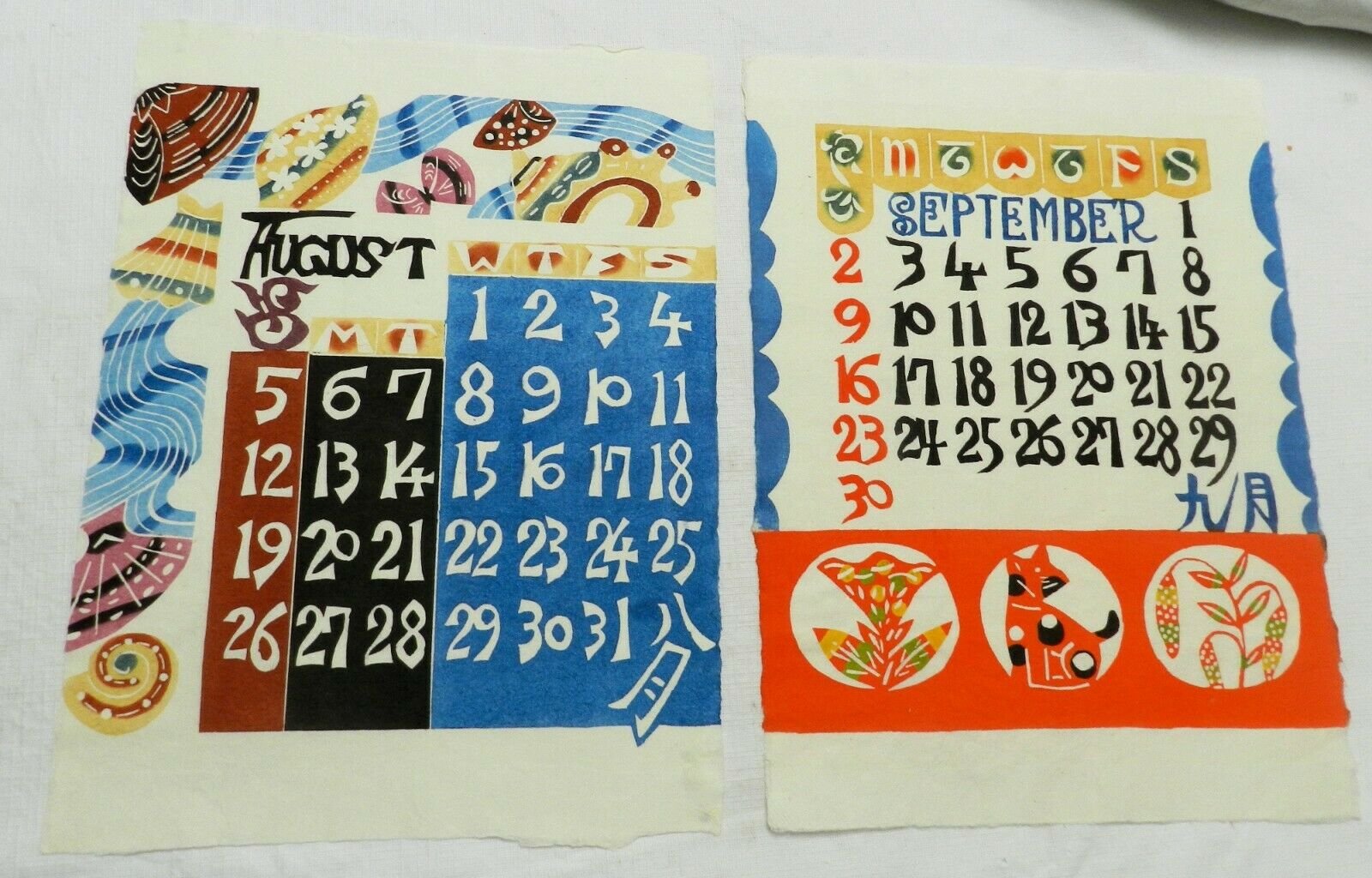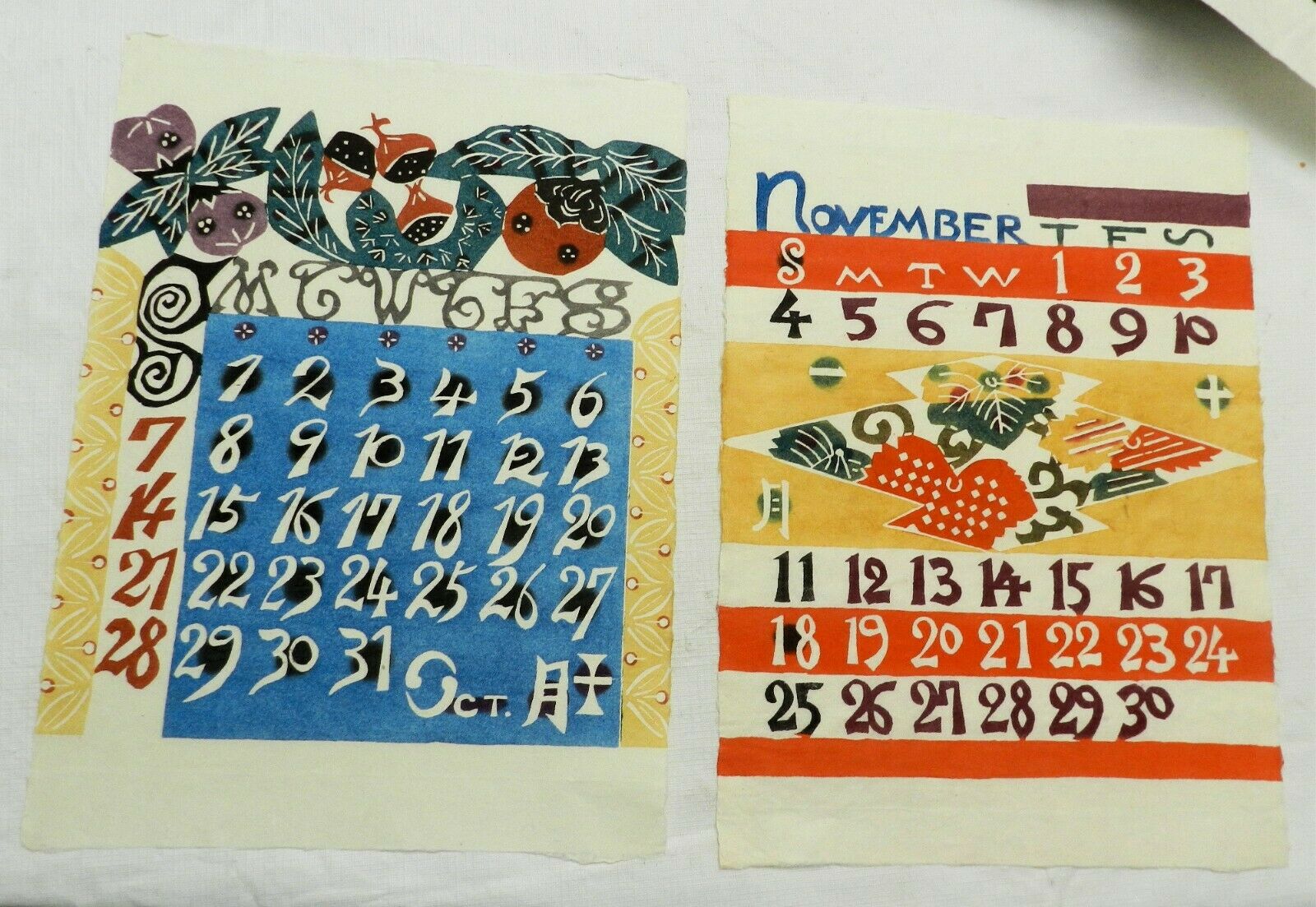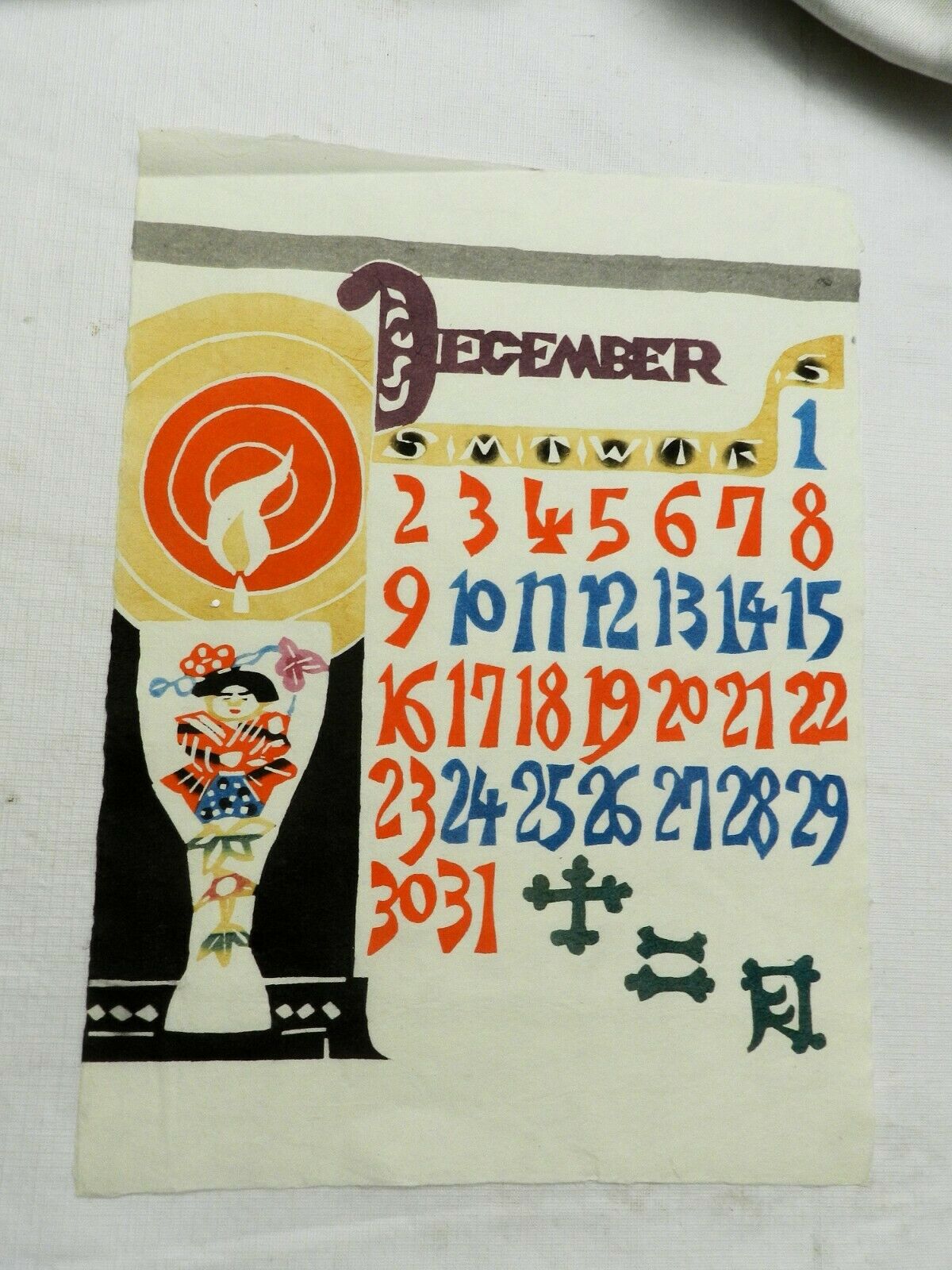-40%
Serizawa Keisuke Japan 1979 "Katezome" Calendar, 10 (of 12) Monthly Prints NICE!
$ 33.79
- Description
- Size Guide
Description
Keisuke Serizawa produced "Katezome" calendar folios starting with calendar year 1946.These calendar sets, one page for each month, are stenciled on handmade untrimmed Japanese mulberry paper. The page size is about 28.6 x 37.2 cm - 11 1/4 x 14 1/2 in. They are usually contained in a mulberry paper sack or thick cardboard (also mulberry paper) folio. On the front of the sack or folding case is pasted on a illustrated stenciled label with the year of the calendar.
This listing is for the 1979 set, containing 10 of the 12 maps from that set, and was found in the original mulberry folio. There is a marking of the number "6" where the "9" is, in 1979. The maps for January and February were not found in this set. THEY ARE IN EXCELLENT CONDITION suitable for framing.
On the artist from the internet, including mention of his calendar sets:
"Keisuke Serizawa: A world famous designer, painter, illustrator, dyer and book and print maker, Keisuke Serizawa attracted international attention as early as 1925 for his distinctive Kataezome style, combining Japanese dyeing techniques with those of Okinawan bingata. This he applied with equal success to kimono and fabric patterns, wall hangings, paintings, fans and original prints. Above all, Keisuke Serizawa became a leading artist of 'Mingei' -- which in Japanese generally means folk art. This original print calendar created for October 1964 is of course a fine example of Serizawa's Mingei.
Shortly after the end of World War II, Keisuke Serizawa instituted his own workshop and teaching studio in his native city of Shizuoka. His reputation continued to spread and he received the highest award for any artist in 1956 when he was designated a "Living National Treasure" by the Emperor of Japan. After Keisuke Serizawa's death in 1984 the Tohoku Fukushi University in Sendai, Tohoku District, constructed a museum comprised solely of Serizawa's art. The Keisuke Serizawa Art & Craft Museum now contains over 200 examples of this artist's fabric patterns and wall hangings and about 1,000 examples of his paper dyeing workshop productions such as original prints, fans and calendars.
The art of Keisuke Serizawa has been exhibited world wide. In the United States his art has been exhibited thus far in two major one man exhibitions. The first took place in 1979 at the Mingei International Museum in San Diego and was entitled, "Keisuke Serizawa: A Living National Treasure of Japan". More recently, in 1998, the Riverside Municipal Museum, Riverside, California, launched a major retrospective entitled, "The Art of Keisuke Serizawa".
An important production of Serizawa's workshop was the annual calendars which he created from the late 1950's to the early 1980's. Each of these calendars contained thirteen original prints, one for each month and a frontis-piece design. October 1964 was printed as a dye print design for the 1964 calendar and clearly represents a beautiful and original example of the folk art of Keisuke Serizawa."
ER
